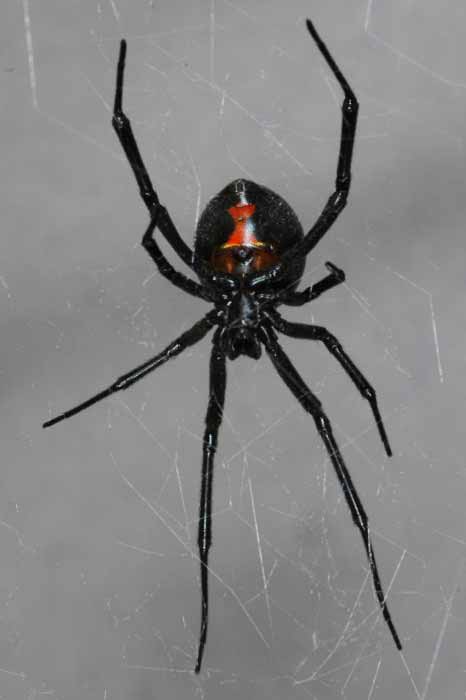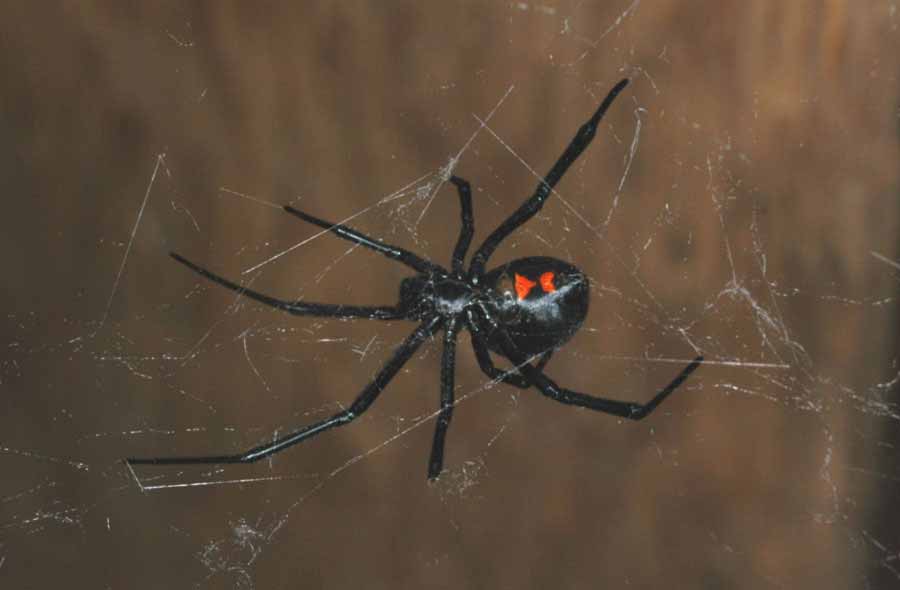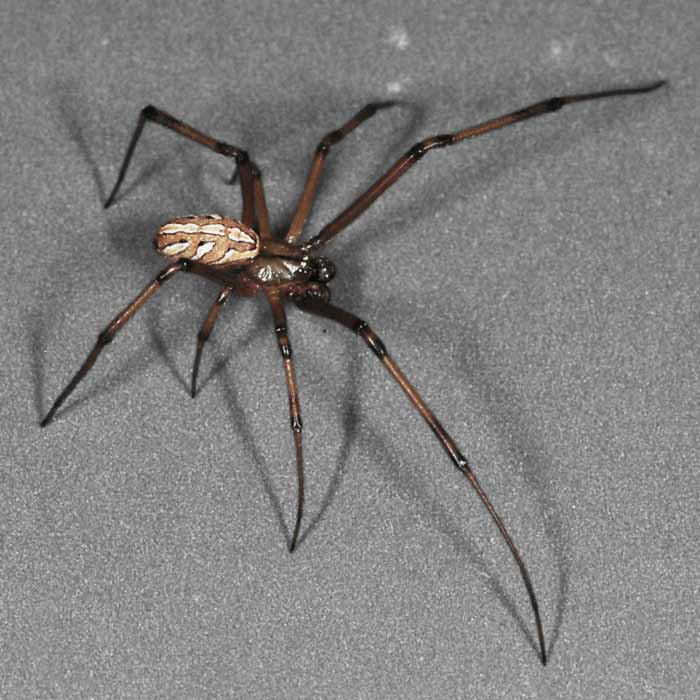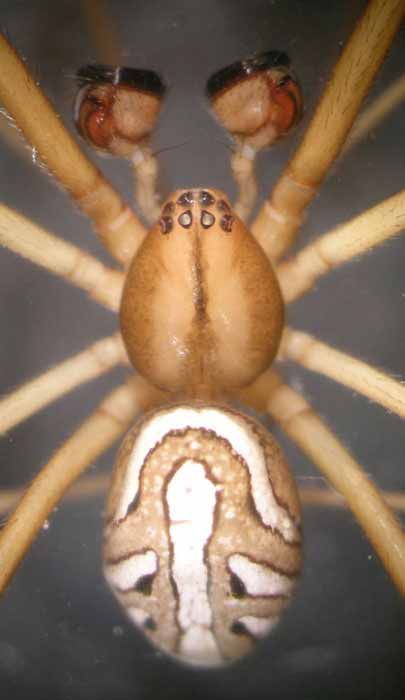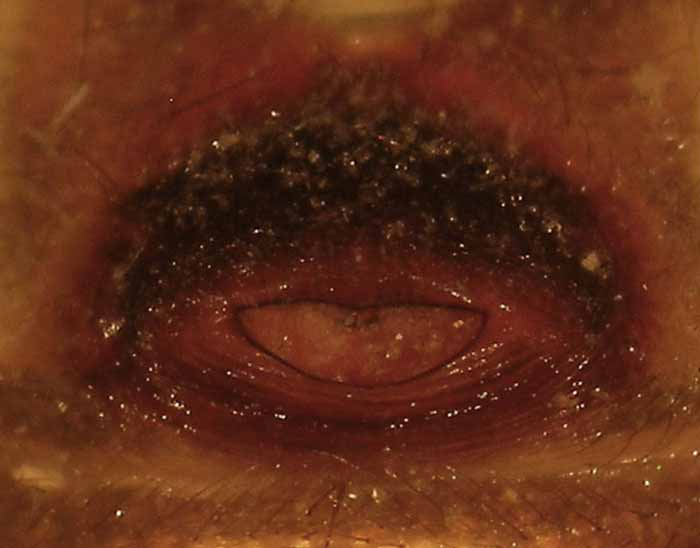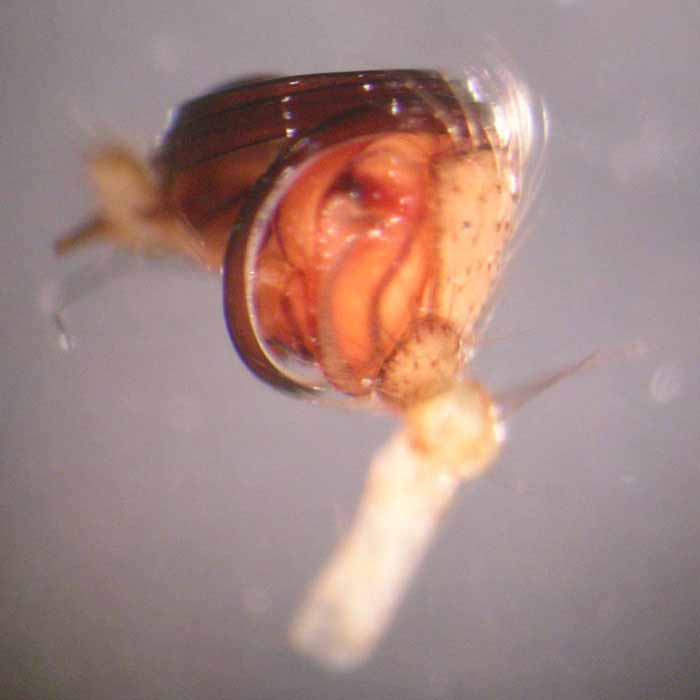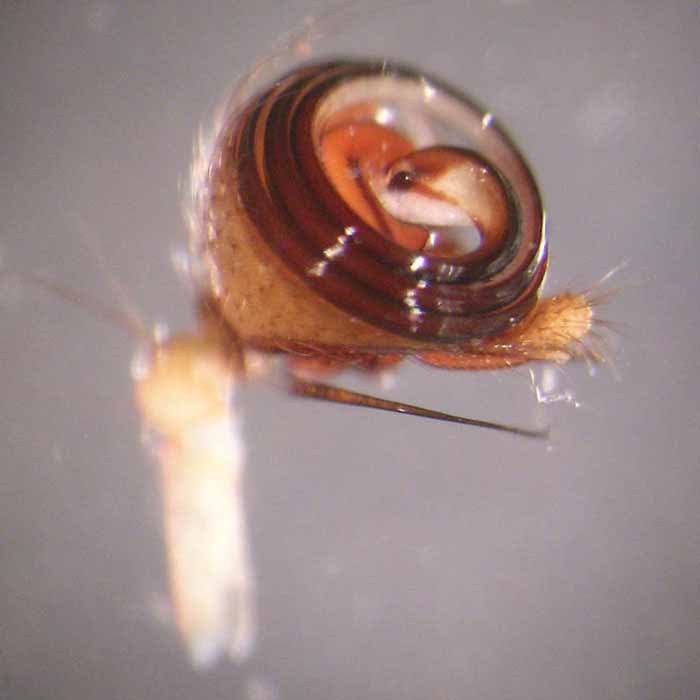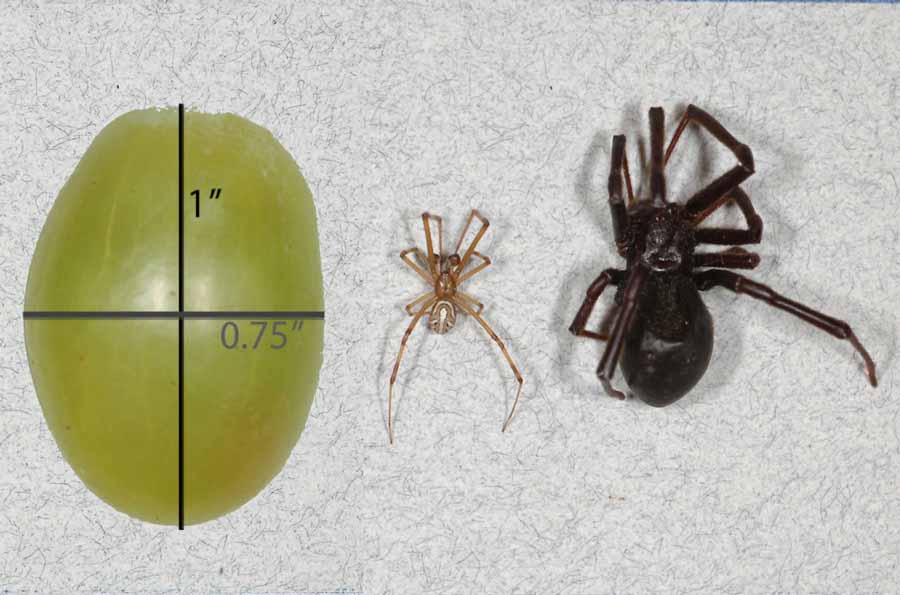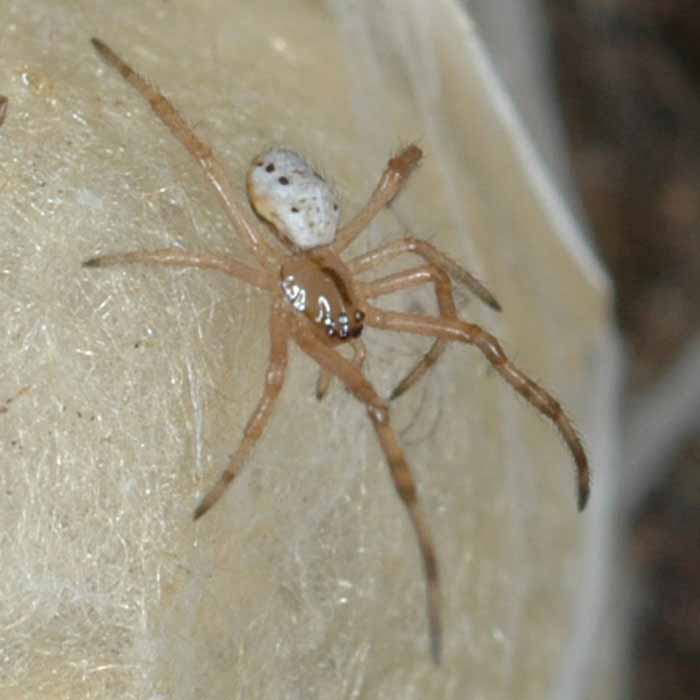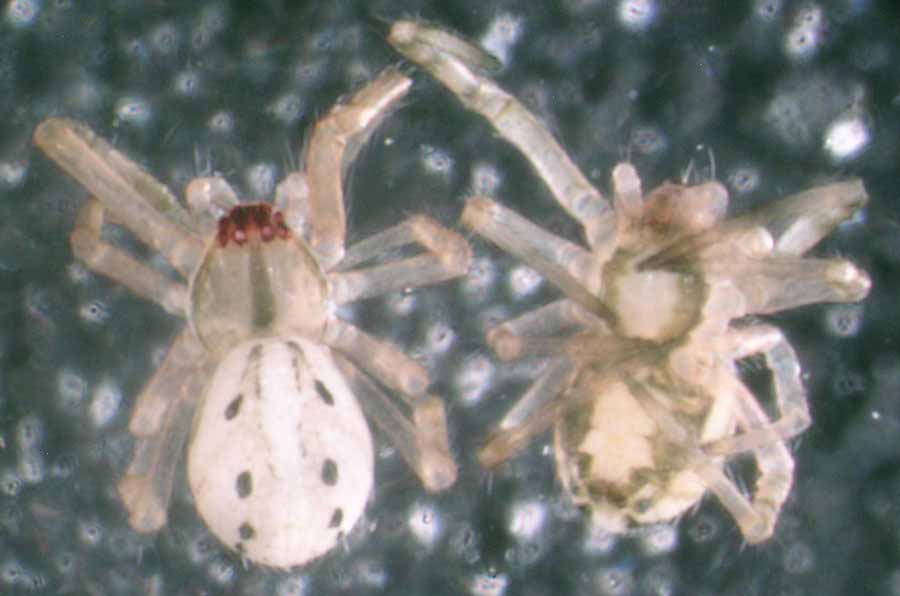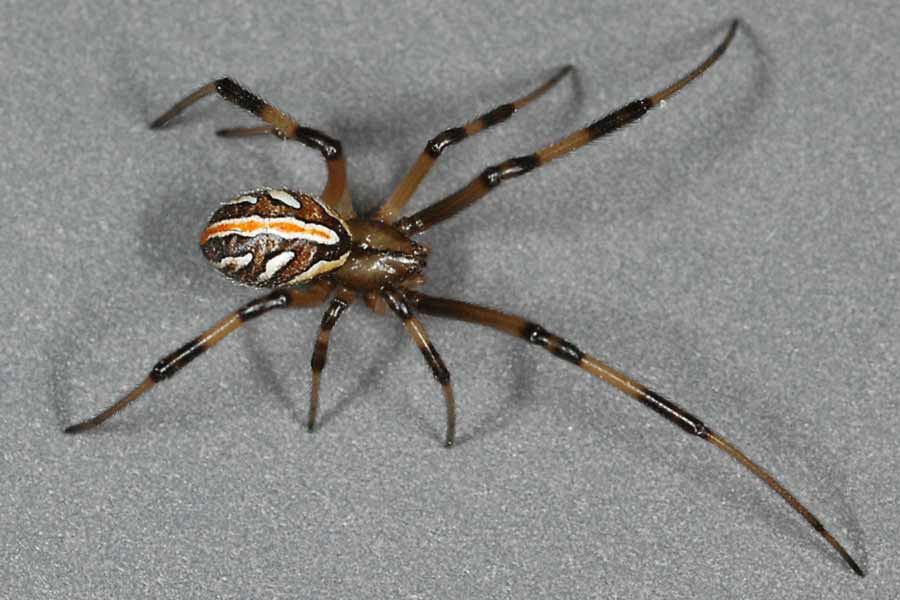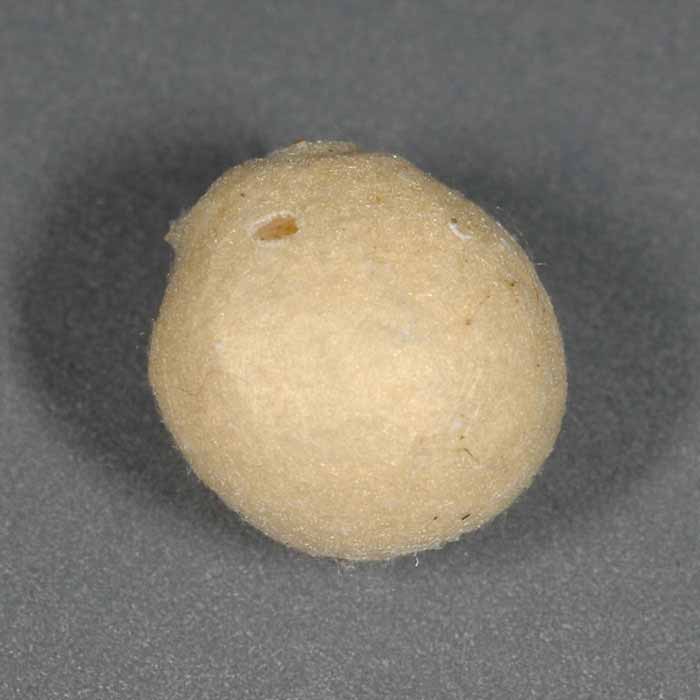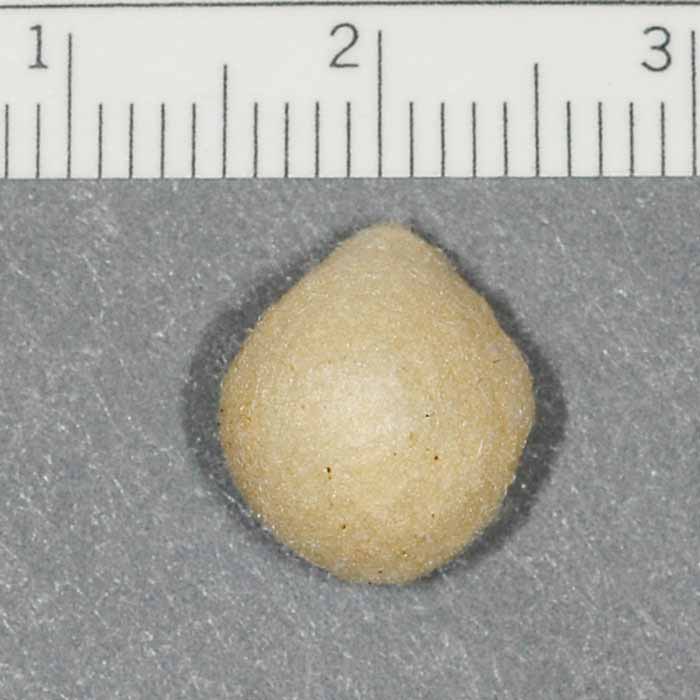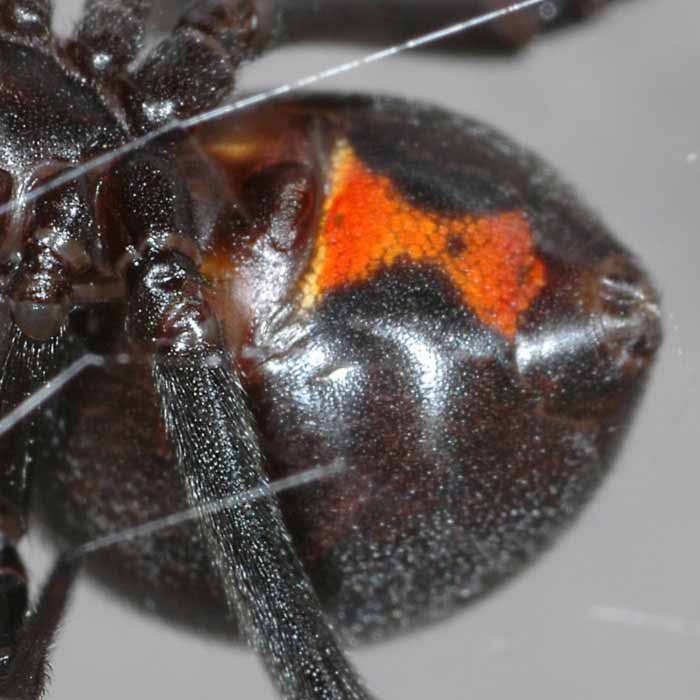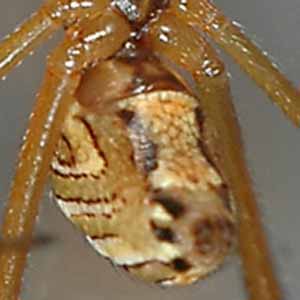Latrodectus hesperus
|
adult female, live |
|
adult female, live |
|
adult male, live |
|
adult male, dead |
|
female genitalia; epigynum |
|
male genitalia; palp, lateral view |
|
male genitalia; palp, ventral view |
|
grape size comparison with adult spiders; male (left), female (right) |
|
spiderling, live |
|
spiderlings, dead; dorsal (left), ventral (right) |
|
juvenile spider, live |
|
egg sac |
|
egg sac with scale (cm) |
|
diagnostic feature; ventral hourglass marking on female abdomen |
|
diagnostic feature; ventral hourglass marking on juvenile abdomen |
Current valid name
Latrodectus hesperus Chamberlin & Ivie (family Theridiidae)
Recognition and diagnostic features
Females are solid shiny black with globose abdomens and a ventral red marking that can vary from a perfect hourglass with triangles touching at the tips to separated red triangles to faint red markings. Smallest immatures have white abdomens with black spots and tan legs and cephalothorax. As spiderlings mature, the abdomen background turns more tan or olive green with a dorsal longitudinal white stripe and three diagonal white stripes on the flank with a small black dot at the dorsal termination of the posterior two flank stripes. Males retain the coloration of the immatures and have round black palps. On occasion, in juveniles, the mid-dorsal abdominal stripe may be red or orange in the middle, females may retain a pair of white chevrons on the anteriormost surface of the dorsal abdomen, and rarely, a male may have a black abdomen.
Related or similar species
The southern black widow, Latrodectus mactans, is very similar looking but occurs solely in the eastern United States. It has been listed as being found in California grapes, but this surely is a misidentification of a western black widow that has retained a little portion of the juvenile coloration (a little red dot anterior to the spinnerets.) This species is not known from anywhere in California. The egg sac of L. mactans is grey and round, differing from that of L. hesperus.
The brown widow, Latrodectus geometricus, can be confused with black widows. It is a recently established non-native spider in California, not yet found in the Central Valley as of 2010. It has also been reported to have been collected from California grapes in New Zealand, but this is probably another misidentification. Brown widows have never been found in California's Central Valley. Most mature females are light tan and mottled, although some may have very dark coloration and understandably could be confused with black widows. Normal colored females and immatures can be confused with immature L. hesperus. The spiked egg sac of the brown widow is diagnostic for this species in North America.
Immature black widows are sometimes confused for the Australian red back, Latrodectus hasselti. However, the longitudinal dorsal abdominal red stripe in L. hasselti covers only the posterior half of the abdomen, whereas in immature L. hesperus, if a red stripe is present, it extends anteriorly almost to the cephalothorax.
Immature Theridion spp. can be confused with immature black widows.
Spider
Body lengths when mature: male: 3 - 6.5 mm, female: 8 - 15.5 mm
Immatures are striped and much lighter in color, males retain immature coloration, females are solid shiny black with a ventral red hourglass.
Egg sac
Description: free-hanging, tear-drop or spherical in shape, light yellow to tan in color, margins distinct, very tough papery silk covering
Number of eggs per sac: mean = 196, typical range = 160 - 225, extreme range = 1 - 598
Number of egg sacs per female lifetime: no mean given, maximum listed = 14
Size of egg: 1.1 mm
Time of year eggs are likely to be laid: throughout year if it is warm enough
Distribution
In California: ubiquitous
Elsewhere: western United States from British Columbia to Mexico, east to central U.S. states
Native to North America
This species has been transported and become established outside of its range.
Biology
Nocturnal. Makes haphazard web of very tough fibers near a retreat in which the mature female hides during the day. Fibers of webs of the larger sized black widows are so tough that they make an audible sound when ripped. Immatures may hang in webs during the day. Females can continue laying fertile eggs for months without re-mating. Rare in grape bunches.
Status in table grapes
Incidence: uncommon
Level of Concern in New Zealand: WPNZ (MAY 2010) R, BORIC (DEC 2011) R, MAF-BPRA (2002) nr (coding definition)
Level of Concern in Australia: WPAU (2006) R (coding definition)
Level of Medical importance: females toxic, males and immatures much less so or harmless
Common name
Western black widow spider for species, combfoot spiders for family
Taxonomic history
The taxonomy of Latrodectus has undergone dramatic changes over the decades. Taxonomists had described specimens as belonging to only a few species spanning two continents. Later studies split them into many separate species. Unfortunately, research performed at the time when there were few species names makes some of the work of limited use unless the area of collection is well documented and the current species name can be assuredly assigned.
For unknown reasons, many non-arachnological authors have misspelled the genus name as Lactrodectus in published articles and book chapters. This has never been part of the spider's taxonomic history but it pops up repeatedly. Misspellings in the 19th century used Lathrodectus.
Commonly encountered synonyms
Latrodectus mactans hesperus
Selected references
Cameron, H. D. 2005. An etymological dictionary of North American spider genus names. pp. 274-330, In: Spiders of North America: an identification manual, D. Ubick, P. Paquin, P. E. Cushing, V. Roth (eds). American Arachnological Society.
Garb, J. E., A. Gonzalez, and R. G. Gillespie. 2004. The black widow spider genus Latrodectus (Araneae: Theridiidae): phylogeny, biogeography and invasion history. Molec. Phylogen. Evol. 31: 1127-1142.
Hernandez, P. 2006. Population dynamics and insecticidal control of the black widow spider Latrodectus hesperus (Araneae: Theridiidae) from California's San Joaquin Valley table grape vineyards. M.S. thesis. Calif. St. Univ. Fresno. 50pp.
Kaston, B. J. 1970. Comparative biology of American black widow spiders. Trans. San Diego Soc. Nat. Hist. 16: 33-82.
Reed, C., and S. Newland. 2002. MAF Biosecurity Pest Risk Assessment: Spiders associated with table grapes from United States of America (State of California), Australia, Mexico and Chile. Ministry Agric. Forestry, Wellington, New Zealand, 92pp.
Vetter, R. S., and G. K. Isbister. 2008. Medical aspects of spider bites. Annu. Rev. Entomol. 53: 409-421.

